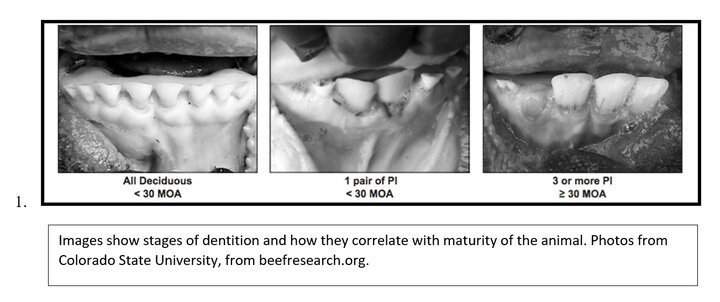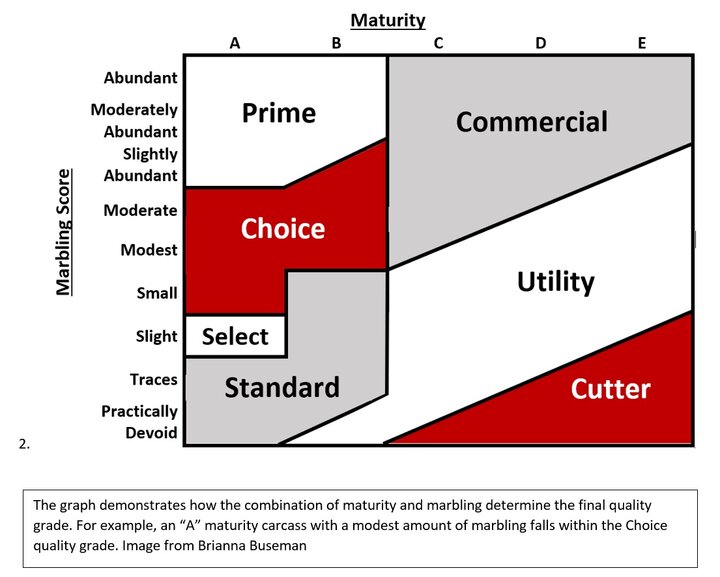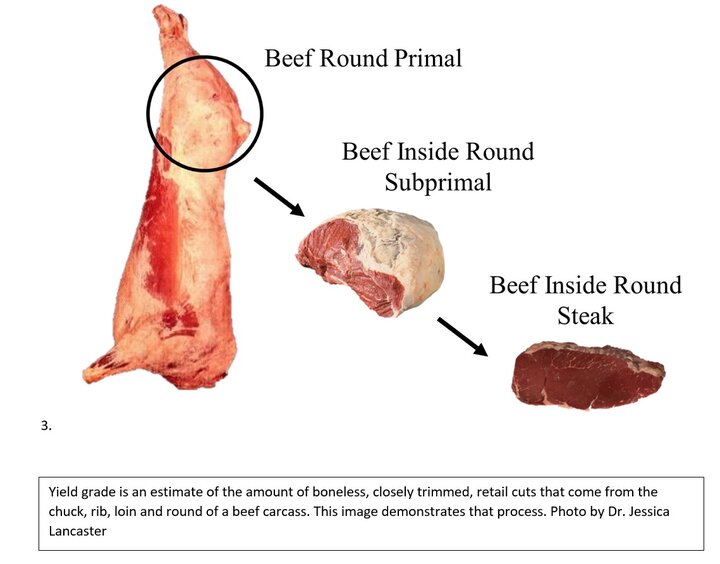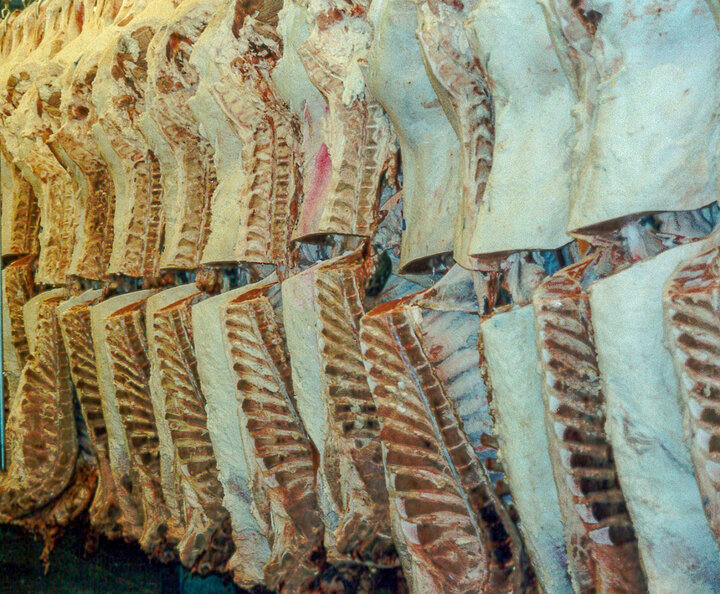When a beef animal is harvested, the value of the carcass and the resulting cuts are determined based on the grades of the carcass. Quality grading and yield grading is monitored by the USDA Agricultural Marketing Service (USDA AMS). Unlike inspection, which monitors food safety and is mandatory for meat products being sold in the United States, grading is a voluntary program and is used to determine the marketability of the product.
Quality grade estimates how good the product is going to taste. It is determined by a combination of maturity and marbling. Beef animals do not come into the packing plant with a birth certificate, so maturity is based on physiological signs of age; specifically, dentition, or how many permanent incisors the animal has. Maturity is rated on a scale of A-E, with an “A” maturity animal being under 30 months of age as demonstrated by having a maximum of one pair of permanent incisors (Figure 1).
In addition to maturity, marbling, or the amount of intramuscular fat, is evaluated to determine the quality grade. Higher levels of marbling are thought to be associated with a product that is more juicy, flavorful and tender. There are 8 different quality grades (USDA: Prime, Choice, Select, Standard, Commercial, Utility, Cutter and Canner). Most of the beef seen in the grocery store comes from young, “A” maturity carcasses and has enough marbling to fall into the USDA Prime, USDA Choice, or USDA Select category (Figure 2). Prime cuts are expected to be the best eating experience and therefore come at a higher price point.
Yield grade estimates how much meat the carcass is going to produce. It is the estimate of the amount of boneless, closely trimmed, retail cuts that will come from the chuck, rib, loin and round of a beef carcass. Yield grade is measured on a 1-5 scale with 1 being the best (a lot of lean product, little excess fat) and 5 being the worst (little lean product, a lot of excess fat). Yield grade is estimated by a calculation that takes into account hot carcass weight, ribeye area, 12th rib backfat, and the amount of internal fat, known as kidney, pelvic and heart fat (Figure 3).
In a packing plant, estimates for quality and yield grade are done with a camera system and confirmed by a USDA AMS employee. These values are utilized to determine the value of the carcass (ex. USDA Prime, yield grade 2 is worth more than a USDA Select, yield grade 4). Additionally, the grades in combination with additional factors (carcass characteristics, muscle size and fat depth, hide color, etc.) are used to determine if a carcass qualifies for a “certified” program such as Certified Angus Beef.
Overall, the goal of grading is to give a prediction of the characteristics of the final product. In turn, this determines the price that the packer can pay the producer for the animal, the retailer pays the packer for the wholesale product, and trickles down to the cost of the final cut at the grocery store. In addition to determining value, grading also aims to provide consistency. Every time someone purchases a Prime Ribeye or Certified Angus Beef New York Strip, they should have a consistent, high quality eating experience that drives them to purchase that product again, which continues to drive the demand for high quality beef.



Interviews with the authors of BeefWatch newsletter articles become available throughout the month of publication and are accessible at https://go.unl.edu/podcast.

